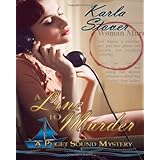For more information about Susan Calder's books, or to purchase please visit Susan's
This is my first appearance on the Books We Love Insider Blog. I thank BWL for the opportunity to write a monthly post. I like blogging, but tend to let it lapse, largely because I feel no one is listening.
However, I’ve had one blogging experience where my post made a connection across the world.
It began when I was visiting my Aunt Edith in rural New Brunswick. During our chat, I told her I was planning a trip to Britain in the fall. She reminded me that she had lived in England until age four, when she immigrated with her parents to St. Andrews, NB.
“My family’s from Oxenhope,” she added.
“Where’s that?”
“Near Haworth, West Yorkshire, where the Brontes lived,” she said. “You must know of them.”
Of course, I did. Charlotte Bronte, author of the classic novel Jane Eyre; Emily, author of Wuthering Heights and their literary siblings, Anne and Branwell. Dark stories of passion, set on the moors.
“I have an umbrella that was owned by Charlotte,” Aunt Edith said.
“Charlotte Bronte?” I sat up straight. “You do?”
Aunt Edith explained that the Bronte housekeeper came into possession of the umbrella, or more accurately a parasol. She passed it down to someone who gave it to Edith’s Auntie Eleanor, in Oxenhope. In the mid-twentieth century, Eleanor gave it to Edith’s sister, who lived in Rhode Island, USA. After her sister died in 2004, Edith inherited it. The umbrella was currently at Edith’s grandson’s house. He had been working to get it into the Bronte Parsonage Museum in Haworth, UK.
“The umbrella belongs in Haworth,” Aunt Edith said. “I want it to go home.”
"How do they know it was really Charlotte’s?” I asked of the parasol that had passed through so many hands.
“The museum has the knob missing from the top,” Aunt Edith said. “It matches.”
Over the years, Aunt Edith had been in contact with Bronte Parsonage Museum. When a friend of hers was travelling to London, UK, he offered to bring the umbrella there. The museum curator was so eager to get it he planned a special trip to London to pick it up. Unfortunately, someone mentioned this to British customs, which refused to let the umbrella into the country because its handle was made from material that is now banned—ivory.
Intrigued by this story of the illustrious umbrella’s journey to a Canadian fishing village, I wrote a blog post about my visit with my aunt and her troubles with returning the artifact to its home. A few days later, I received an email from a Bronte Parsonage Museum staff person. My post had appeared in their Google Alert for anything remotely connected to the Brontes. She said they had read my account with fascination and remembered the case clearly. The person who was dealing with it at their end left shortly afterwards and their correspondence with Aunt Edith lapsed. They were now keen to revive it. Could I put them in contact with my aunt?
I emailed Aunt Edith, who told me that our conversation had prompted her to have the umbrella re-examined by a local expert. He determined the handle material was bone, not ivory. This kind of bone is not a banned or restricted animal substance, which means that the parasol could enter the UK without a CITES* license. (*Convention on International Trade in Endangered Species of Wild Fauna and Flora).
I gave the Bronte museum Aunt Edith’s email address. The staff person thanked me for my helpful post, adding that, without it, the parasol would have been forgotten. They arranged for Aunt Edith to have the umbrella shipped to the Bronte Parsonage Museum. I still subscribe to the museum’s newsletter. One of these days I hope to visit the parasol owned by Charlotte and my aunt.
I expect that Charlotte Bronte’s umbrella would have made the journey home to Haworth eventually, but I was glad to be part of its story.
Aunt Edith, who celebrated her 100th birthday last August
You can also meet Susan on her website and Amazon.com Author Page



















